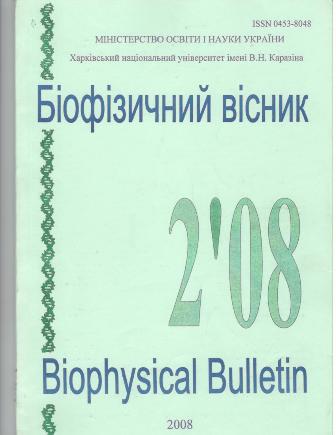Liposomal formulations of antitumor drugs. I. Cholesterol effect on membrane interactions of europium coordination complexes
Abstract
Among a wide variety of drug, nanocarriers developed to date, liposome-based delivery systems are particularly attractive due to their advantageous features such as biocompatibility, complete biodegradability, low toxicity, ability to carry both hydrophilic and lipophilic payloads and protect them from chemical degradation and transformation, increased therapeutic index of a drug, improved pharmacokinetic and pharmacodynamic profiles compared to free drugs, reduced side effects, etc. The efficiency of drug encapsulation is largely determined by its membrane-partitioning properties as well as physicochemical characteristics of the lipid vesicles. In the present study, we concentrated our efforts on the pre-formulation studies of the two synthesized Eu(III) coordination complexes, V3 and V4, the potential anticancer drugs. More specifically, our goal was twofold: i) to characterize the membrane partition properties of these complexes, and ii) to assess how the lipid-associating ability of V3 and V4 depends on membrane structural state being varied by introducing the different amounts of cholesterol (Chol) into phosphatidylcholine (PC) lipid vesicles. To achieve this goal, several fluorescent probes including pyrene, 1,6-diphenyl-1,3,5-hexatriene (DPH), and 4-p-(dimethylaminostyryl)-1- dodecyl pyridinium (DSP-12) have been employed. Partition coefficients of lanthanides determined using the equilibrium dialysis technique proved to depend on the amount of Chol content. The formation of drug lipid complexes was found to affect pyrene epimerization and DSP-12 spectral properties but exerted no influence on pyrene vibronic structure and DPH anisotropy. Membrane composition was shown to have an impact on the spectral responses of the probes in drug-lipid systems. This finding was interpreted as arising from the sterol condensing effect on the structural state of the lipid bilayer.
Downloads
References
2. L. Cavalcanti, O. Konovalov, I. Torriani // Eur. Biophys. J. 2006. V. 35. P. 431-438
3. D. Drummond et al. // Pharm. Rev. 1999. V. 51. P. 691-743.
4. G. Momekov et al. // Medicinal Chemistry. 2006. V. 2. P. 439
5. B. Mui et al. // Meth. Enzymol. 2003. V. 367. P. 3-14.
6. G. Bartlett // J. Biol. Chem. 1959. V. 234. P. 466-468.
7. A.S. Ladokhin et al. // Biophys. J. 1997. V. 72. P. 794-8
8. T. Rog, M. Pasenkiewicz-Gierula // Biophys. J. 2001. V. 81.
9. S.A. Pandit, D. Bostick, M.L. Berkowitz // Biophys. J. 2004. V. 86. P. 1345-1
10. E. Falck et al. // J. Phys. Chem. 2004. V. 121. P. 12676-12689.
11. V. Ioffe, G.P. Gorbenko // Biophysical Chemistry. 2005. V. 114
Authors who publish with this journal agree to the following terms:
- Authors retain copyright and grant the journal right of first publication with the work simultaneously licensed under a Creative Commons Attribution License that allows others to share the work with an acknowledgement of the work's authorship and initial publication in this journal.
- Authors are able to enter into separate, additional contractual arrangements for the non-exclusive distribution of the journal's published version of the work (e.g., post it to an institutional repository or publish it in a book), with an acknowledgement of its initial publication in this journal.
- Authors are permitted and encouraged to post their work online (e.g., in institutional repositories or on their website) prior to and during the submission process, as it can lead to productive exchanges, as well as earlier and greater citation of published work (See The Effect of Open Access).





